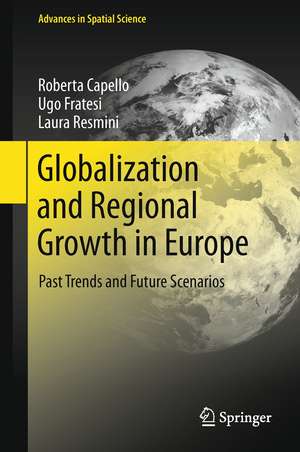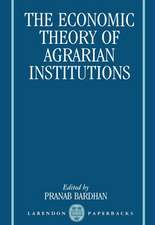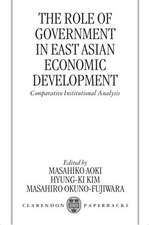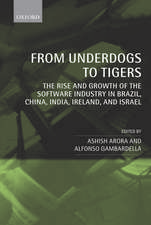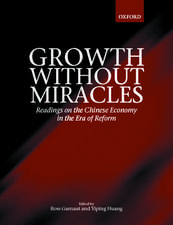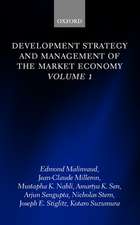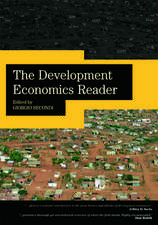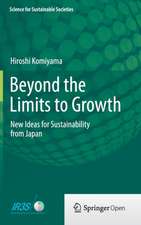Globalization and Regional Growth in Europe: Past Trends and Future Scenarios: Advances in Spatial Science
Autor Roberta Capello, Ugo Fratesi, Laura Resminien Limba Engleză Paperback – 15 iul 2013
| Toate formatele și edițiile | Preț | Express |
|---|---|---|
| Paperback (1) | 643.99 lei 6-8 săpt. | |
| Springer Berlin, Heidelberg – 15 iul 2013 | 643.99 lei 6-8 săpt. | |
| Hardback (1) | 648.24 lei 6-8 săpt. | |
| Springer Berlin, Heidelberg – 29 mai 2011 | 648.24 lei 6-8 săpt. |
Din seria Advances in Spatial Science
-
 Preț: 368.92 lei
Preț: 368.92 lei - 18%
 Preț: 963.47 lei
Preț: 963.47 lei - 18%
 Preț: 948.16 lei
Preț: 948.16 lei - 18%
 Preț: 947.67 lei
Preț: 947.67 lei - 18%
 Preț: 940.72 lei
Preț: 940.72 lei - 18%
 Preț: 954.45 lei
Preț: 954.45 lei - 15%
 Preț: 646.62 lei
Preț: 646.62 lei - 18%
 Preț: 959.50 lei
Preț: 959.50 lei - 18%
 Preț: 956.33 lei
Preț: 956.33 lei - 18%
 Preț: 949.23 lei
Preț: 949.23 lei - 15%
 Preț: 646.75 lei
Preț: 646.75 lei - 15%
 Preț: 643.99 lei
Preț: 643.99 lei - 18%
 Preț: 955.40 lei
Preț: 955.40 lei - 15%
 Preț: 643.00 lei
Preț: 643.00 lei - 15%
 Preț: 644.49 lei
Preț: 644.49 lei - 18%
 Preț: 953.35 lei
Preț: 953.35 lei - 18%
 Preț: 956.03 lei
Preț: 956.03 lei - 15%
 Preț: 647.27 lei
Preț: 647.27 lei - 15%
 Preț: 638.24 lei
Preț: 638.24 lei - 18%
 Preț: 961.23 lei
Preț: 961.23 lei - 18%
 Preț: 954.93 lei
Preț: 954.93 lei - 15%
 Preț: 643.48 lei
Preț: 643.48 lei - 18%
 Preț: 955.70 lei
Preț: 955.70 lei - 15%
 Preț: 650.86 lei
Preț: 650.86 lei - 15%
 Preț: 650.04 lei
Preț: 650.04 lei - 15%
 Preț: 648.42 lei
Preț: 648.42 lei - 18%
 Preț: 949.42 lei
Preț: 949.42 lei - 18%
 Preț: 960.30 lei
Preț: 960.30 lei - 18%
 Preț: 948.29 lei
Preț: 948.29 lei - 18%
 Preț: 958.07 lei
Preț: 958.07 lei - 18%
 Preț: 950.66 lei
Preț: 950.66 lei - 18%
 Preț: 956.03 lei
Preț: 956.03 lei - 15%
 Preț: 643.65 lei
Preț: 643.65 lei - 18%
 Preț: 956.99 lei
Preț: 956.99 lei - 18%
 Preț: 956.81 lei
Preț: 956.81 lei - 18%
 Preț: 958.73 lei
Preț: 958.73 lei - 18%
 Preț: 959.98 lei
Preț: 959.98 lei - 18%
 Preț: 952.40 lei
Preț: 952.40 lei - 15%
 Preț: 643.00 lei
Preț: 643.00 lei
Preț: 643.99 lei
Preț vechi: 757.63 lei
-15% Nou
Puncte Express: 966
Preț estimativ în valută:
123.27€ • 133.94$ • 103.61£
123.27€ • 133.94$ • 103.61£
Carte tipărită la comandă
Livrare economică 21 aprilie-05 mai
Preluare comenzi: 021 569.72.76
Specificații
ISBN-13: 9783642268489
ISBN-10: 364226848X
Pagini: 364
Ilustrații: XXII, 342 p.
Dimensiuni: 155 x 235 x 19 mm
Greutate: 0.52 kg
Ediția:2011
Editura: Springer Berlin, Heidelberg
Colecția Springer
Seria Advances in Spatial Science
Locul publicării:Berlin, Heidelberg, Germany
ISBN-10: 364226848X
Pagini: 364
Ilustrații: XXII, 342 p.
Dimensiuni: 155 x 235 x 19 mm
Greutate: 0.52 kg
Ediția:2011
Editura: Springer Berlin, Heidelberg
Colecția Springer
Seria Advances in Spatial Science
Locul publicării:Berlin, Heidelberg, Germany
Public țintă
ResearchCuprins
1 The Regional Dimension of Globalization: Past Trends and Future Scenarios.- Part A: National and Regional Globalization Processes.- 2 The EU in the Global Economy.- 3 Globalization and the Reshaping of Regional Economies: Favoured Territories.- Part B: Globalization and Regional Economic Growth Patterns.- 4 Global Regions in Europe.- 5 Spatial Patterns of Globalization Trends.- 6 European Regional Performance in a Globalized Europe.- 7 Regional Attractiveness and Its Regional Determinants.- Part C: European Regional Scenarios.- 8 Scenario Methodology: A New MASST Model.- 9 Globalization and European Strategies: Alternative Scenarios.- 10 The European Territory in 2020: Winners and Losers in a Globalized World.- 11 Towards a Conclusion: Policy Implications.- References.- About the Authors.- Index
Notă biografică
Roberta Capello is full professor of regional economics at Politecnico di Milano and president of the Regional Science Association International. She holds a Ph.D. in Economics obtained at the Free University of Amsterdam in 1993.
Ugo Fratesi is associate professor of regional and urban economics at thePolitecnico di Milano since December, 2010. He is member of the editorial boardand book review editor of the Italian Journal of Regional Science since 2008. Heis treasurer and member of the Council of the Italian Section of the RegionalScience Association International (AISRe). He is author of two books and severalpapers published in refereed journals in the field of regional economics, especiallyon the themes of regional growth, disparities, and policy.
Laura Resmini is associate professor of Economic policy at the University of Valle d'Aosta, senior researcher at ISLA, Centre for Latin American and Transition Country Studies at Bocconi University (Milan).
Ugo Fratesi is associate professor of regional and urban economics at thePolitecnico di Milano since December, 2010. He is member of the editorial boardand book review editor of the Italian Journal of Regional Science since 2008. Heis treasurer and member of the Council of the Italian Section of the RegionalScience Association International (AISRe). He is author of two books and severalpapers published in refereed journals in the field of regional economics, especiallyon the themes of regional growth, disparities, and policy.
Laura Resmini is associate professor of Economic policy at the University of Valle d'Aosta, senior researcher at ISLA, Centre for Latin American and Transition Country Studies at Bocconi University (Milan).
Textul de pe ultima copertă
After a description of the new forms of globalization currently shaping our world, and of their possible spatial effects, the book highlights which European regions have in the past succeeded in taking advantage of globalization trends and identifies the major reasons for their success. The book also offers a prospective analysis utilizing scenarios based on different assumptions of how globalization trends will develop, identifying the regional winners and losers for each scenario. The analysis greatly benefits from a unique database which contains, among others, data on FDI by sector and professions at the regional Nuts-2 level for all 27 EU countries. A time-span of more than 10 years is covered, and scenarios are developed for the future development up to 2020.
Caracteristici
Updated methodologies Comparison on all EU member country region Results produced on maps, easily readable Includes supplementary material: sn.pub/extras
